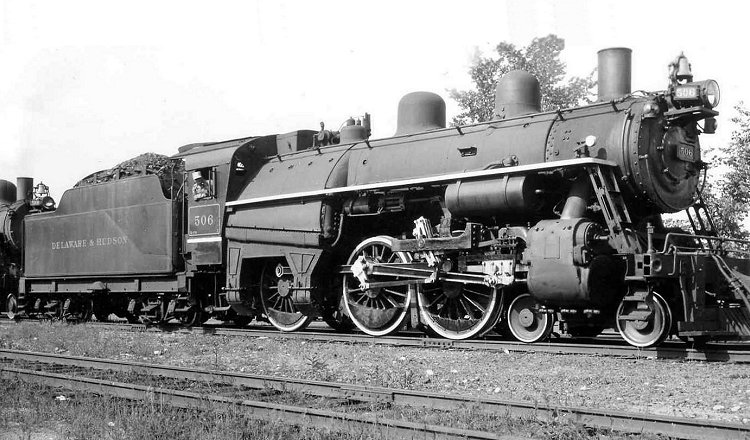Delaware & Hudson 4-6-0 No. 506 appears at Lake George, New York in this undated photo that came to our collection via William D. Volkmer. Thirteen Ten-wheelers of the D-3 class were originally built as camelbacks, the first group by American Locomotive Company in 1903 and the second group, including No. 506, in the D&H's own shops in 1903-04. The D&H made frequent modifications to these locomotives during their careers, two obvious changes in the case of No. 506 being conversion to a single-cab layout and replacement of the Stephenson valve gear by the Walschaerts type.
Eventually the various members of the class came to differ considerably in specifications, with boiler pressure ranging from 200 to 225 p.s.i. and tractive effort from 30,150 to 34,000 pounds. Driver diameter is given as 72 inches, and No. 506 weighed 204,800 pounds and had 22x26-inch cylinders. When superheated, she had 1897 square feet of evaporative heating surface and 375 square feet of superheating surface. The Wooten firebox, with its 85 square feet of grate area, was designed for cooler-burning anthracite instead of bituminous coal; its width was what prompted these engines' original construction as camelbacks. Later, that width made it possible for the D&H's Colonie Shops to install the railroad's distinctive outboard ash pans, which partially hide the third set of driving wheels. The last surviving members of the D-3 class were withdrawn from service in 1952.
